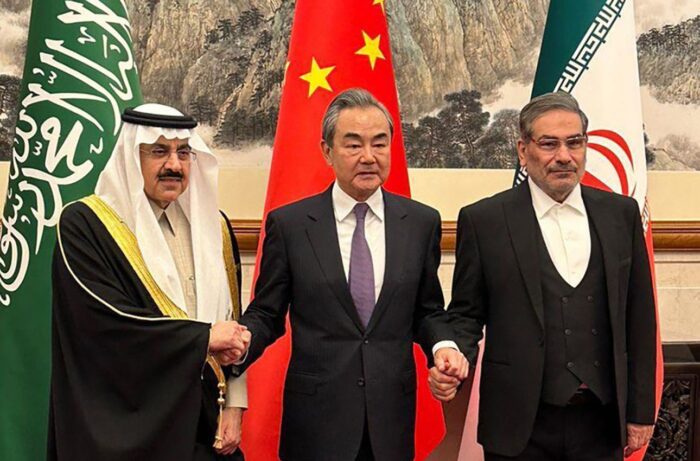Insight 303: India Looks West while the MENA Region Turns Eastwards
- Tiziano Marino
- - October 3, 2023

Series Introduction
India-Middle East Relations: Opportunities and Challenges
With the United States shifting its security focus from the Middle East to the Asia-Pacific, other major powers are seen as potential players that might fill the void in Middle East security. The fact that India is one such player is further manifested in the recently announced India–Middle East–Europe Economic Corridor.
This series of Insights seeks to unravel the evolutionary paths that the growing multifaceted connections between India and the Middle East might take and the challenges arising. India’s relationship with Israel, especially under the purview of the I2U2 partnership, which also includes the United Arab Emirates and the United States, has in particular generated much curiosity among observers. India’s longstanding economic ties with the GCC countries, along with its ties with Iraq and Iran, have added to the strategic significance of the Middle East for India and given it strong reasons for a greater role in the Middle East.
Click HERE FOR THE PDF.
By Tiziano Marino and Giuseppe Dentice*
Security and multilateralism are among the key pillars of India’s Look West policy that began in 2014. To broaden and deepen the country’s relations with the Middle East beyond the traditional aspects of hydrocarbon purchases and the presence of a large Indian diaspora in the Gulf, New Delhi has focused heavily on the UAE and Israel, two countries that look to the Indo-Pacific with great interest for strategic and commercial reasons. India has now formalised strategic partnerships with the UAE and Israel, and in 2021 joined the two and the United States to establish the “I2U2”. Amid increasing geopolitical polarisation and conflict, how important is the I2U2 to India? What are the prospects for regional cooperation between India and its Middle Eastern partners? Can India and its partners move beyond tactical responses to address broader strategic challenges in both the Middle East and the Indo-Pacific?
Image Caption: India’s President Narendra Modi gazes westward, while the UAE’s President Mohamed bin Zayed Al Nahyan and Israel’s President Benjamin Netanyahu turn their attention towards the East. Photo: Prema
About the Author
* Mr Tiziano Marino is the head of the Asia-Pacific analysis unit at Centro Studi Internazionali (CeSI) in Rome, Italy. He has published extensively on Asia-Pacific issues and coordinated international research projects on security and geoeconomic issues related to the area. He has lectured widely on the economic and security dynamics of South, Southeast and Central Asia and is currently an instructor for the FAO course “Safe and Secure Approaches in Field Environments (SSAFE)”. He is regularly interviewed on Asia-Pacific issues by Italian and international media.
* Dr Giuseppe Dentice is the head of the MENA analysis unit at Centro Studi Internazionali (CeSI) in Rome, Italy, where he analyses geopolitical and security issues in the MENA region, with a special focus on the foreign and security policies of Egypt, Israel and the Gulf monarchies. He obtained his doctorate in “Politics and Institutions” at the Catholic University of the Sacred Heart in Milan, where he serves as a teaching assistant. He has contributed to several reports for the Italian Parliament and Ministry of Foreign Affairs and is also regularly interviewed on MENA affairs by Italian and international media outlets.
More in This Series
More in This Series
- Jean-Loup Samaan
- - July 11, 2024
- Aisha Al-Sarihi, Ehsan Rasoulinezhad, Jinseok Sung
- - June 20, 2024




